Last-Minute NYC Holiday Gift Guide 🎁
We’ve created a holiday gift guide with presents for the intrepid New Yorker that should arrive just in time—


Nestled between the high-rises of Downtown Flushing and the stately garden apartments of Jackson Heights lies Corona. With roughly 65% of residents born outside the United States and 44,000 people (or almost 85%) identifying as Hispanic, Corona is a slice of Latin America in the middle of Queens. The neighborhood is mostly low-rise, consisting of two, three, and four-story apartment buildings and houses. Corona’s main link to Manhattan is the 7 train, which serves the neighborhood at the 111th Street, 103rd Street, and Junction Boulevard stops.
While today Corona is a bustling 24/7 New York City neighborhood, only a century ago it was a quiet marshland. Originally called West Flushing, much of the land occupied by modern-day Corona was part of the vast saltwater marsh called the Flushing Meadows. This swamp stretched all the way from the mouth of the Flushing Creek on the Long Island Sound down to its basin in what is today the neighborhood of Kew Gardens. Here is our guide to the top 10 secrets of Corona, Queens.
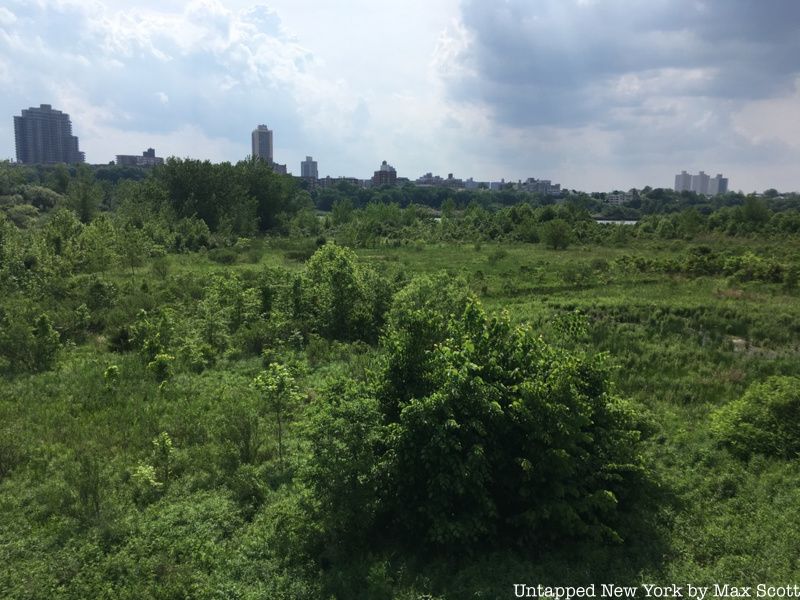
For 10,000 years after the melting of the last glaciers on Long Island, the three-mile stretch of land between the hills of Flushing and the woodlands of Jackson Heights contained a sprawling saltwater marsh. The Lenape people who lived in the area around Elmhurst and Flushing had used these wetlands as hunting grounds for millennia. After they were largely driven out of western Queens in the late 1600s, the farmers and townspeople of the rural borough continued to use these wetlands, which had come to be known as the Flushing Meadows, as common hunting land.
However, by the 1890s, the corrupt Tammany-controlled Brooklyn Ash Removal Company began using the Flushing Meadows as their private dumping ground for the ashen remains of incinerated garbage. Over the next 30 years, the giant piles of burned garbage were unloaded into the Flushing Meadows, creating mounds 40 to 50 feet high. The largest of these mounds was almost 100 feet tall and nicknamed “Mount Corona” by the locals. Corona’s ash heaps had become so infamous that they inspired F. Scott Fitzgerald to call Corona the “valley of ashes” in The Great Gatsby. The construction of the World’s Fair site in 1939 leveled the mountains of ash and dealt a fatal blow to the remaining wetlands of Flushing Meadows. Corona’s contemporary urban landscape, and modern Flushing Meadows-Corona Park, were built on the layered remains of incinerated garbage and marshland.
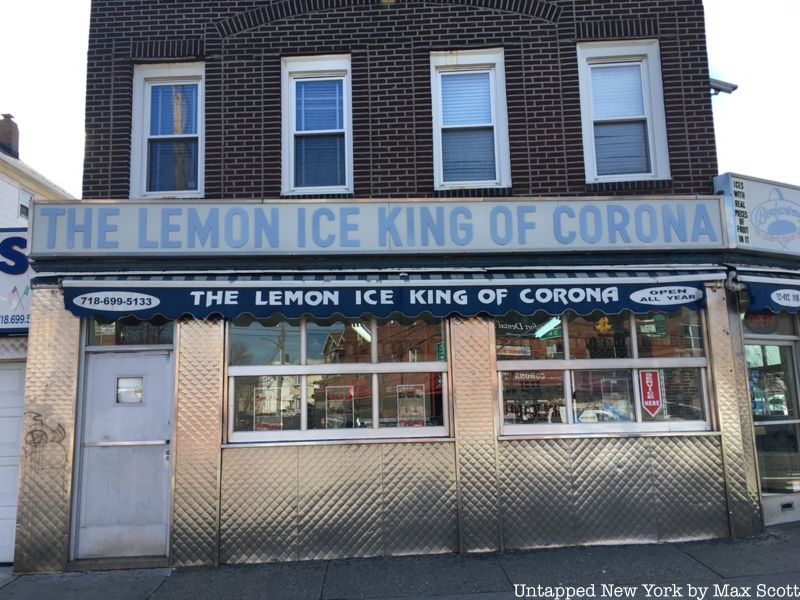
Located at the intersection of Corona Avenue, 52nd Avenue, and 108th Street, the Lemon Ice King of Corona sits at the heart of the neighborhood’s long-time Italian community. During much of the 20th century, the southern section of Corona was predominantly Italian, with the main commercial corridors being along 108th Street, Corona Avenue, and 104th Street. Today, most of the residents of Corona are Hispanic, but a few of the old Italian businesses have remained. The Lemon Ice King is probably the best known of these old businesses, but there is also a well-known Italian restaurant called Park Side and a deli called Leo’s Latticini, which has been serving fresh subs and mozzarella since 1920.
The Lemon Ice King of Corona serves 40 different flavors of Italian ice and five flavors of candied apples. Their classic flavor is lemon, but they also have eccentric ones like cantaloupe, rum raisin, and rootbeer. Aside from their menu, the Lemon Ice King was also featured in the early 2000s sitcom “The King of Queens.”
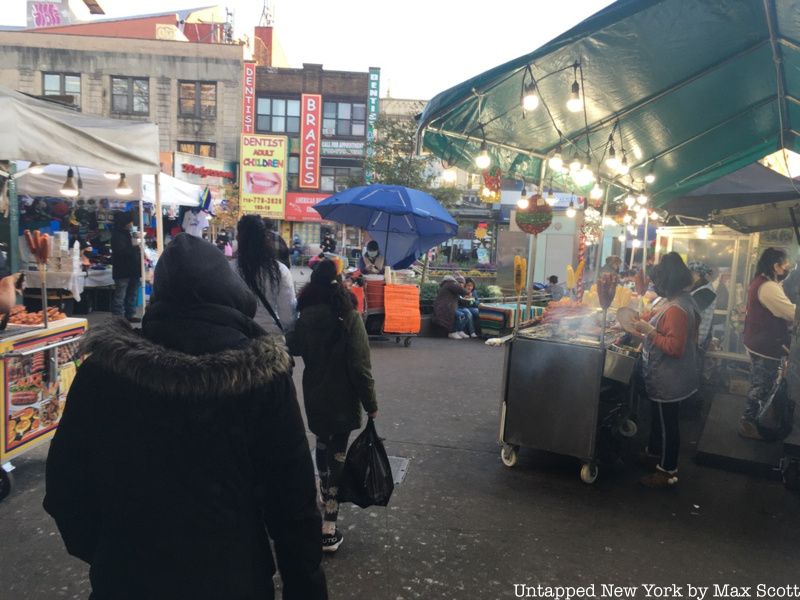
Corona Plaza is a small trapezoidal piece of land at the intersection of Roosevelt Avenue and National Street. The plaza started out as a truck parking lot for nearby businesses on the adjacent streets. It remained that way throughout the 20th century until 2005, when the Queens Museum requested that the lot be used as the site of a public art display. By 2012, the Queens Economic Development Corporation partnered with the Queens Museum to begin turning the lot into a permanent public space. Over the next few years, the Department of Design and Construction filled in the parking lot with concrete, added benches, and planted street trees. Construction was completed in 2018, with maintenance and cleaning services being taken over to the Department of Transportation.
Since the pandemic and the expansion of outdoor dining, Corona Plaza has blossomed into an outdoor marketplace with dozens of street vendors. Tired workers who have just gotten off the 7 train at 103rd Street-Corona Plaza often stop and buy a homemade tamale or quesadilla on their way home. Parents can be seen buying coats, hats, and backpacks for their children. And with the essentials covered, there are also stalls selling trinkets, incense, decorative fabric, and toys.
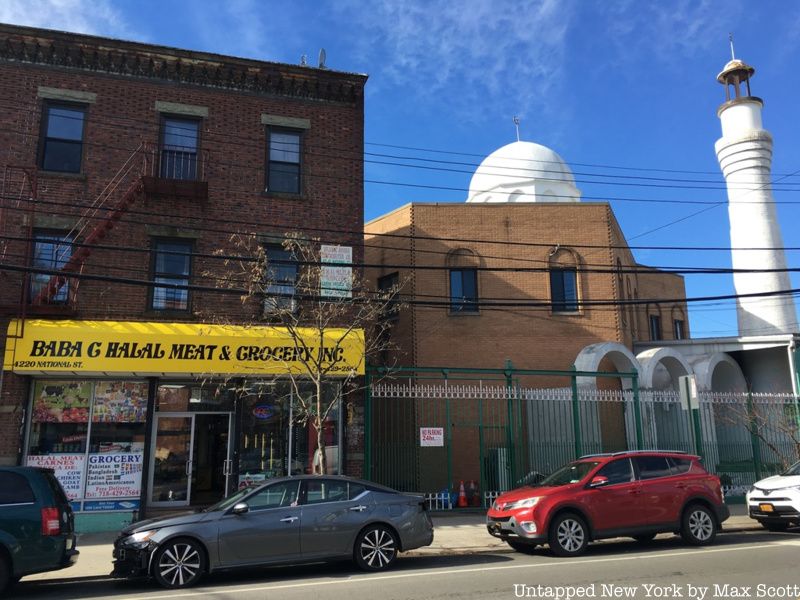
On just a one-block stretch of National Street near Corona Plaza, there is a mosque called the Masjid Al-Falah, the Kingdom Hall of Jehovah’s Witnesses, and the El Amanecer De La Esperanza Catholic Church. Just four blocks away on Junction Boulevard, there is the Bangladesh Hindu Mandir temple, and in a five-minute walk in the other direction along Junction Boulevard is the Transfiguration of Christ Greek Orthodox Church.
This religious diversity comes from Corona’s ethnic and cultural diversity. While the area is largely Latino, there are significant numbers of other groups of people as well. According to the 2010 Census, while people of Latin American origin made up 44,000 of the neighborhood’s 52,000 people, a sizable Asian community of 3,600 people, and a smaller black community of 2,500 people, coexisted alongside the Spanish-speaking immigrants.
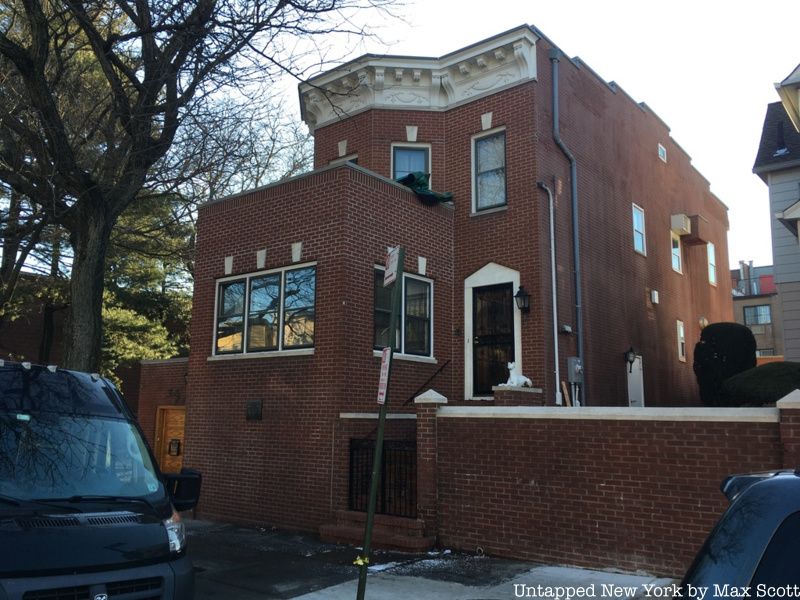
Corona was the residence of the jazz trumpeter Louis Armstrong, one of the most beloved 20th-century American musicians. Originally from New Orleans, he had a career spanning over five decades and was influential in developing the solo free-styling that is now a core feature of jazz music. While he was musical as a child, his career began in Chicago in the 1920s as a trumpet player and vocalist. Louis Armstrong moved to 34-56 107th Street in Corona, Queens in 1943 and lived there until his death in 1971. While living in Queens, Armstrong recorded the hit 1964 song “Hello, Dollie!” Within days of its release, the song hit number one on the Hot 100, making Armstrong, at the age of 62, the oldest person to accomplish that feat.
Today, Armstrong’s house is a museum dedicated to his life and jazz at large. The Louis Armstrong House Museum is a treasure trove of recordings, historic photographs, written documents, and musical instruments all available to the public on-site. A few of their most impressive records are Louis and Lucille Armstrong’s collection of over “5,000 photographs, 270 sets of band parts, 12 linear feet of papers, letters and manuscripts, five trumpets, 14 mouthpieces, 120 awards and plaques, and much more.”

Louis Armstrong moved to Corona in the 1940s because it was a center of Black American life and culture. Because of racial segregation and discrimination, Black people were forced into separate enclaves across New York. Although Corona wasn’t as big as Harlem, San Juan Hill, Bed-Stuy, or Jamaica, it was still home to a sizable and vibrant Black community in New York.
The neighborhood’s legacy as a relatively safe space for African Americans to live, work, and play is reflected in the Black Heritage Reference Center in the heart of North Corona. Located inside a branch of the Queens Public Library on 100th Street and Northern Boulevard, the Black Heritage Reference Center contains over 40,000 volumes of material related to Black culture and the Black experience in America. A few examples from their extensive collection are the Langston Hughes Collection and the Black Newspaper Microfilm Collection, which holds over 1,400 reels of newspapers dating back to 1831.
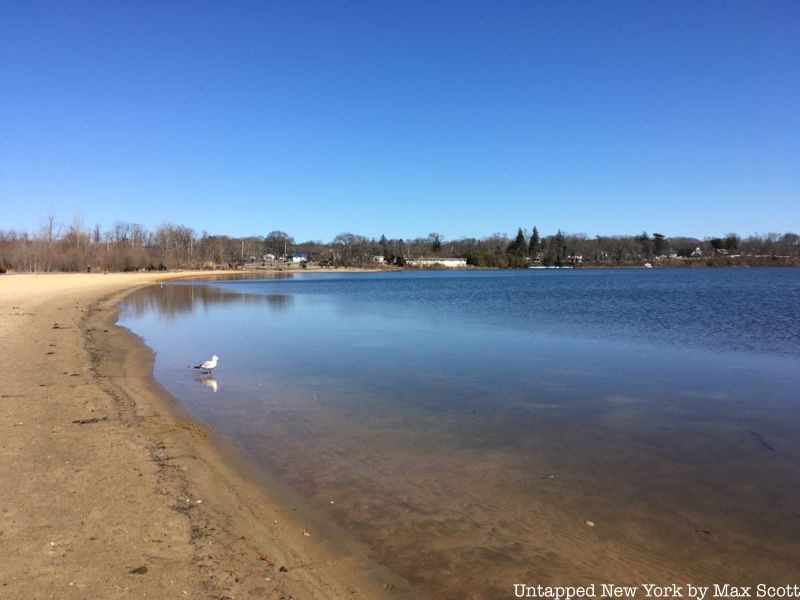
Although today Corona is a dense urban environment made of asphalt, concrete, and bricks, the area used to be home to three kettle ponds. A kettle pond is a body of water left behind by retreating glaciers. They are formed when a large chunk of ice breaks off from a melting glacier and then gets stuck as dirt and sediment build up around it. When the ice eventually melts, a small pond or lake is formed. Long Island used to be littered with kettle ponds because it was created by the runoff of giant melting glaciers. While most of the kettle ponds in New York City and Long Island have been long since filled in, the largest of them all, Lake Ronkonkoma in Suffolk County, still exists to this day.
Corona’s three kettle ponds were scattered throughout the neighborhood. The first one, called Linden Pond, was just south of Corona Plaza in the Park of the Americas between 103rd and 104th streets. Linden Pond survived as the centerpiece of the Park of the Americas until 1947, when it was filled in during a park redesign. The other two kettle ponds were called Shady Lake and Backus Lake. Shady Lake was located at the present-day site of the Lemon Ice King at the intersection of Corona Avenue and 108th Street. Backus Lake was near the intersection of 98th Street and 31st Avenue. Both ponds were declared public health hazards and removed in the early 20th century.
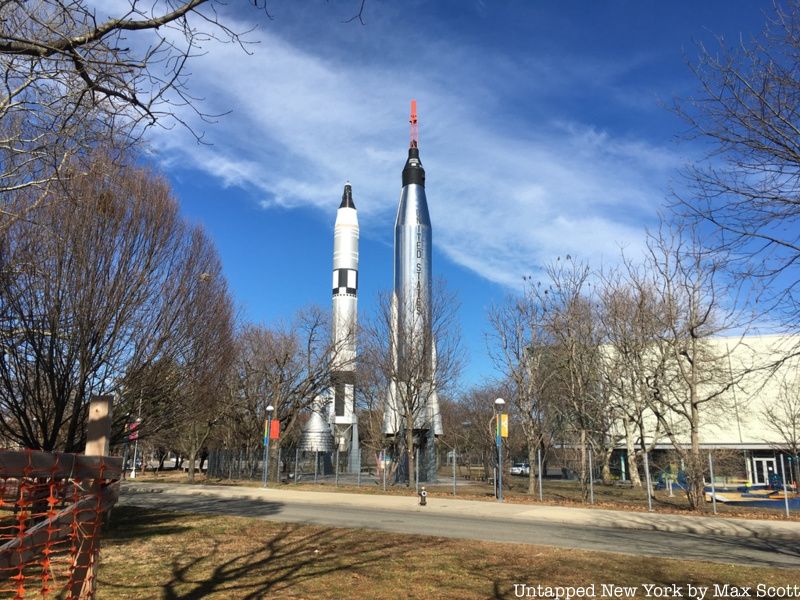
Hidden in plain sight in Flushing Meadows Park is the New York Hall of Science. The Hall of Science is a fun, kid-oriented science center. Children can spend countless hours watching mini tornadoes form in the wind tunnel, learning how dry ice melts in the experimentation lab, and playing the Game of Life in the computer science section. With after-school programming, science-themed summer camps, and tons of hands-on activities for young people, the New York Hall of Science is a destination for parents and teachers with kids interested in science.
But the Hall of Science also has a not-so-hidden secret. Sitting right outside the building is the Hall of Science’s Rocket Park. For kids who are interested in space, astronauts, and astronomy, the Rocket Park is a dream come true. The park contains two original 1960s-era rockets, the Titan II at 110 feet tall and the Atlas rocket just slightly shorter. Although these two rockets never went into space, they were originally built during the Cold War to carry nuclear warheads. Rocket Park also boasts the propulsion section of the Saturn V rocket, which took Neil Armstrong and Buzz Aldrin to the moon.
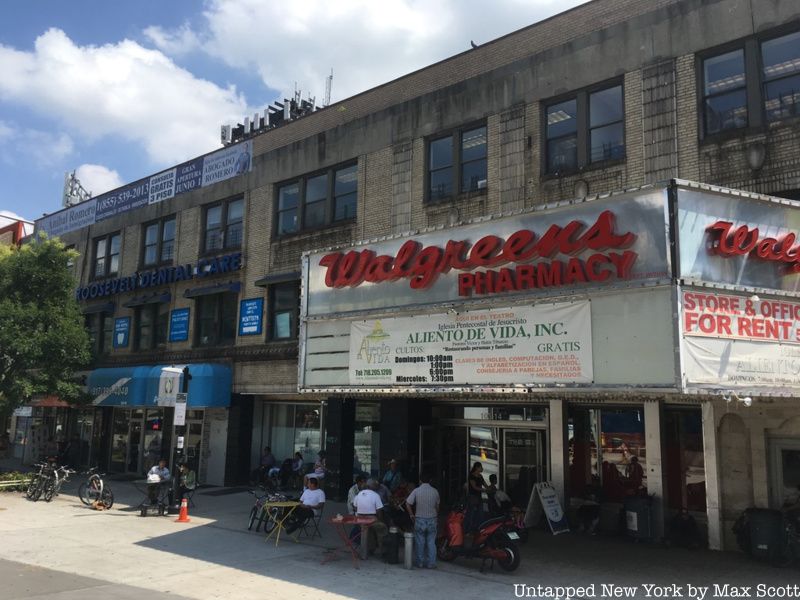
Anchoring Corona Plaza on 103rd Street and Roosevelt Avenue is one of Queens’ oldest theaters. First opened in 1927 with the extension of the 7 train through Corona, the Lowe’s Plaza Theater featured vaudeville performances and early black-and-white films. In the years following the opening of Lowe’s modern and upscale Valencia Theater in Jamaica, the Plaza Theater in Corona began to lose its prestige. When the theater company Lowe’s was broken up by antitrust laws in 1952, the Plaza Theater was bought by Century Circuit, which ran it as a low-budget movie theater. In the 1990s, the Plaza Theater changed hands again, and this time it was run as an independent theater catering to the new Latino immigrant population by showing Hollywood films subtitled in Spanish.
Unfortunately, this local, community-oriented independent theater closed its doors in 2005 and two chain stores, Walgreens and Pollo Campero, moved in. Today, the Plaza Theater still contains the Walgreens and Pollo Campero, but it is also home to two small businesses, Sabor Guatemalteco and U-Crew Thai Creamery and Tea, the Romero law firm, run by first-generation Ecuadorian lawyer Anibal Romero, as well as a nutritionist’s office and the Aliento de Vida church. While the theater continues to serve the community as a hub for local businesses and institutions, its original, ornamental tin-tiled ceilings still exist behind closed doors.
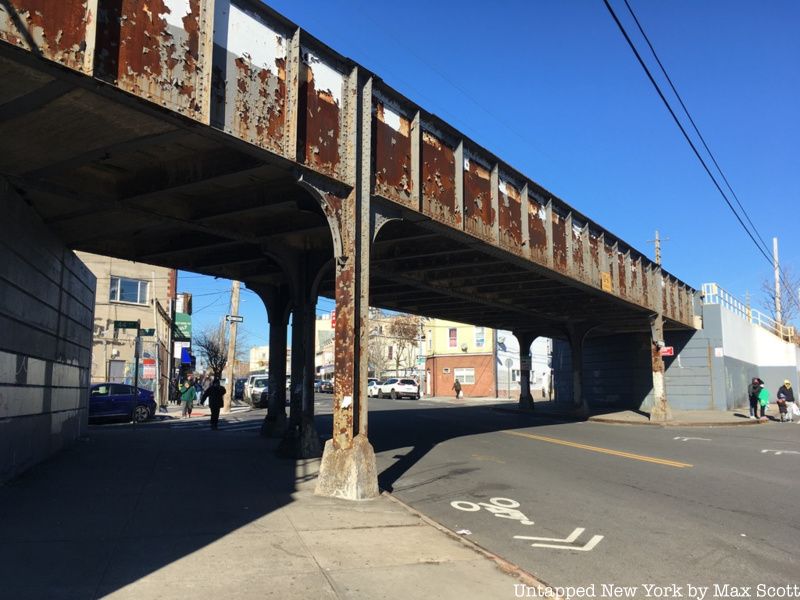
Corona was also the birthplace of professional baseball. While the game had taken root in the New York region by the 1840s, with the first game purportedly being played in 1845 in Hoboken, New Jersey, the first game of baseball between two professional teams took place at Corona’s Fashion Race Track in 1858. The two teams, the Brooklyn All Stars and the New York All Stars, arrived at the racetrack by train, getting off at the Long Island Rail Road’s Corona Station on National Street and 44th Avenue.
Before the 7 train would rumble through the neighborhood almost fifty years later, the New York and Flushing Railroad, which would later be incorporated as a branch of the Long Island Rail Road, spurred the first real estate development in Corona with the construction of the Fashion Race Track. Long before the construction of Ebbets Field or Shea Stadium, it was at this racetrack in 1858 that the first ticket-paying crowd would watch a game of professional baseball. The importance of this first game as the start of baseball’s long career as America’s pastime imbued the game’s trophy with tremendous value. In 2005, the original 1858 trophy sold for almost $500,000 and was reported on by the Baseball Almanac.
Next check out the The Top 10 Secrets of Jackson Heights!
Subscribe to our newsletter